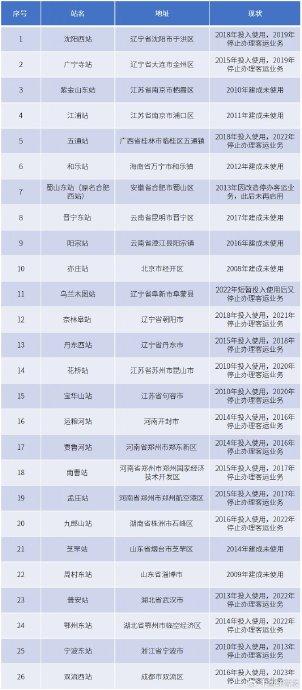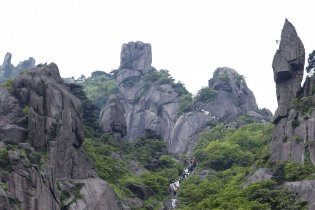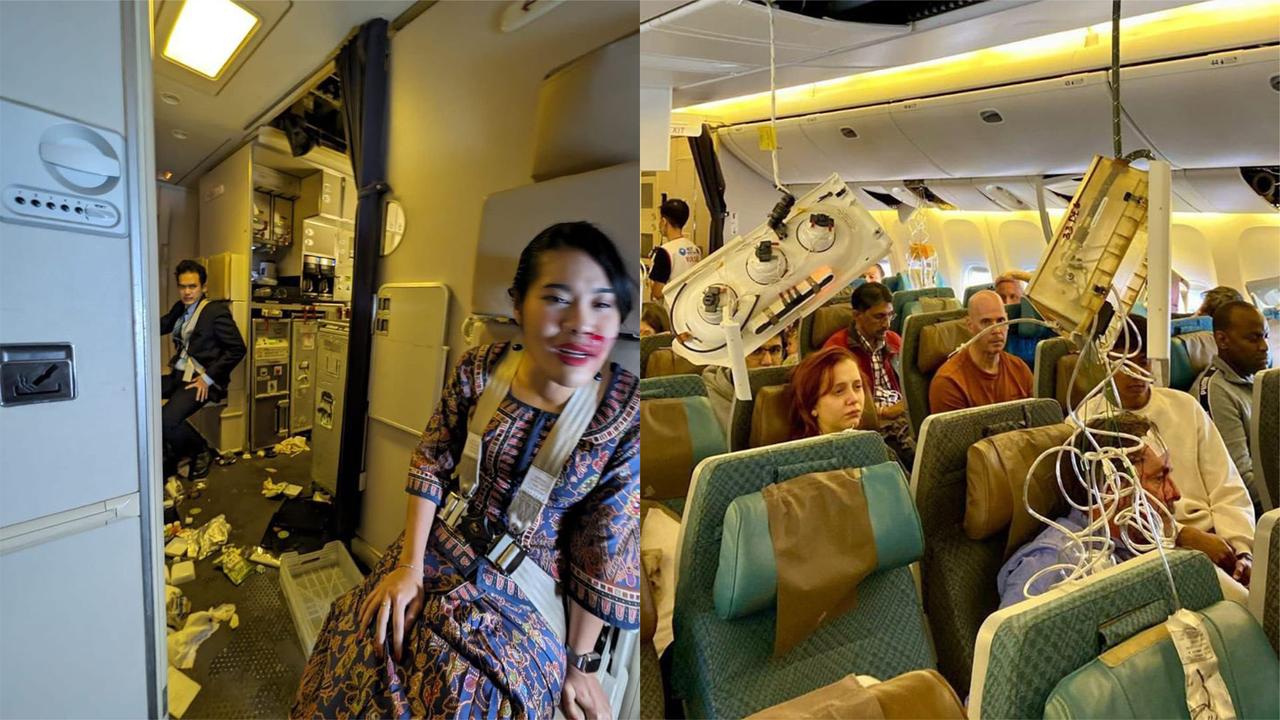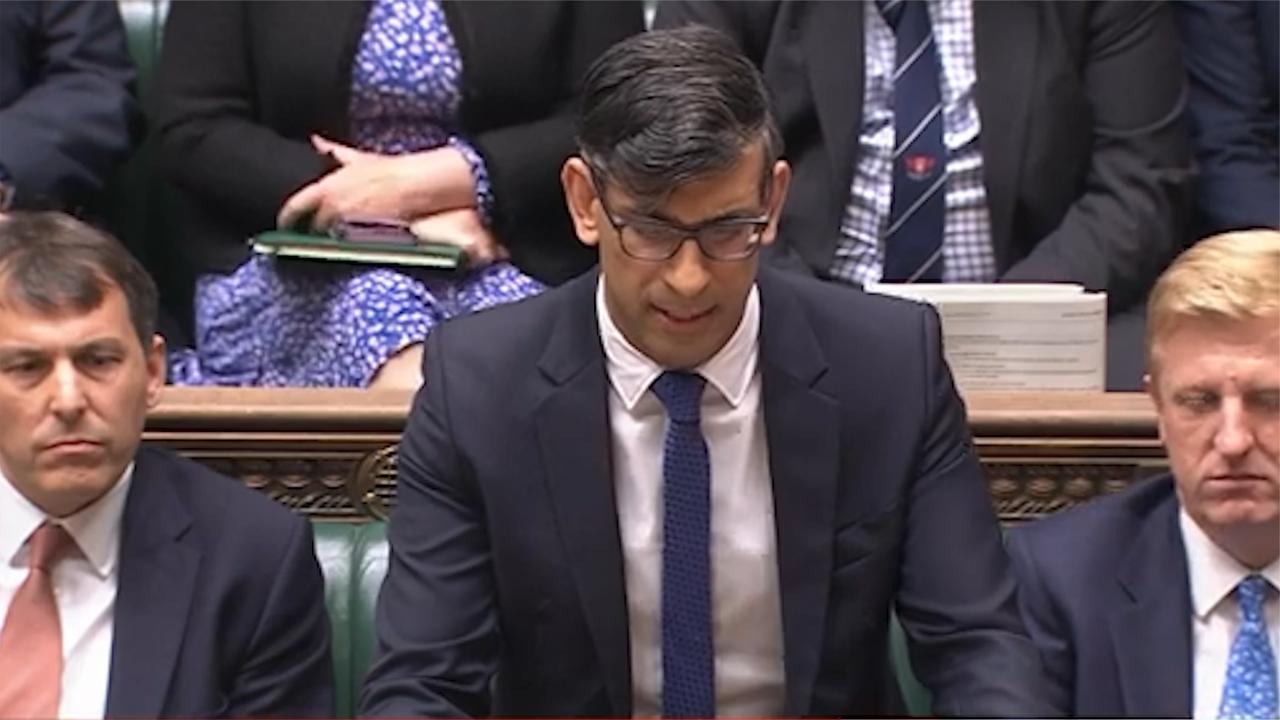Source: China Business Daily
Our reporter Sun Lizhao reports from Beijing
In recent years, the large-scale construction of high-speed railway has led to the addition of a large number of high-speed railway stations in China. At the same time, the news that high-speed railway stations with an investment of more than 10 million yuan, such as Hainan Danzhou Haitou Station, have been completed and not used has also triggered heated discussion from all walks of life.
According to the statistics of China Business Daily, at least 26 high-speed railway stations across the country have not been opened or closed due to remote location, insufficient supporting facilities and low passenger flow.
How did these expensive high-speed railway stations go from design, planning, investment and construction to idleness? What roles have the designer, high-speed railway operator and local government played in this process, and who should be responsible for these ineffective investments?
26 high-speed railway stations completed and unused
In July 2023, Hainan Danzhou Haitou High speed Railway Station, which has been built for more than 7 years but has not been put into use with an investment of more than 40 million yuan, has attracted wide attention. On July 14, Hainan Provincial Development and Reform Commission replied on this issue, saying that through communication with the railway department, the daily passenger flow of Haitou Station was less than 100 people, and the railway department suffered serious losses after the opening and operation of Haitou Station, which was the main reason restricting the opening of Haitou Station.
Danzhou Transportation Bureau also said in 2021, when replying to the relevant suggestions of the deputies to the Municipal People's Congress, that the opening of the Haitou High speed Railway Station was decided by Yuehai Railway Co., Ltd. The company said that, in consideration of factors such as the passenger source and operating costs of the Haitou High speed Railway Station, there were operating losses and it had not been opened. If it was necessary to open the station, Danzhou would need about 5 million yuan of subsidies to support operating losses.
Since then, under the pressure of public opinion, Haitou Station has officially started to use on December 15, 2023.
Haitou Station is not an example. The reporter of China Business Daily combed and concluded that at least 26 high-speed railway stations across the country were not opened or closed after completion. For example, Wanning Hele Station of Hainan Huandao High speed Railway, Shenyang West Station of Beijing Harbin High speed Railway, Dandong West Station of Dandong Dalian Express Railway and Guangningsi Station are all completed and not put into operation. The main reason is that the passenger flow is too small.
Some stations were closed due to small passenger flow after being put into operation for a short time. The Jiulang Mountain Station in Zhuzhou City was put into operation at the end of 2016 with the opening of the Changsha Zhuzhou Xiangtan Intercity Railway. However, the official information shows that since the opening, the passenger flow of the Jiulang Mountain Station has been declining significantly, and the passenger service will be suspended in 2022.
In February 2024, Zhuzhou Railway Station replied to netizens' questions on the Rednet "Voices of the People" platform in charge of the Publicity Department of the Hunan Provincial Party Committee, saying that since the opening of the station on December 26, 2016, the average daily traffic volume of Jiulangshan Station has dropped from less than 100 people in the initial stage of operation to less than 10 people since 2021. The passenger flow is seriously insufficient, which not only has minimal economic benefits, but also has very limited social benefits. However, the operating costs of staff salaries, cleaning costs, water and electricity costs, equipment maintenance costs and other aspects required by the operation are very high, resulting in unnecessary waste of manpower and costs, and affecting the transportation efficiency of the intercity line. Therefore, the passenger transport operation of Jiulangshan Station has to be suspended. If the passenger transport market is mature and the travel demand increases in the future, it can be considered to resume business as the case may be.
Similar situations not only occur in small cities, but also in some first-line cities and provincial capital cities where high-speed railway stations are idle. Yizhuang Station of Beijing Tianjin Intercity High speed Railway, located in Beijing Economic Development Zone, has been built for more than 15 years and is still idle. Shenyang West Railway Station, more than 20 kilometers away from the center of Shenyang, was put into use on December 29, 2018. On July 10, 2019, it stopped handling passenger transport business and was only used for 7 months from opening to closing. Zijin Shandong Station and Jiangpu Station in Nanjing were built in 2010 and 2011 respectively, but they have not been put into use.
People from China National Railway Group Co., Ltd. (hereinafter referred to as "China Railway Group") told the China Business Daily that the two high-speed railway stations in Nanjing, for example, were idle mainly because of unscientific site selection, long distance from the urban area, immature surrounding transportation facilities and poor connection with other transportation modes.
Yu Jian, a member of China Railway Economic Planning and Research Institute affiliated to China Railway Group, and others mentioned in the Research on Issues Related to the Location of High speed Railway Stations (hereinafter referred to as the "Research") published in 2020 that with the rapid expansion of the scale of the high-speed railway network, a large number of new high-speed railway stations have been built, but some problems have gradually emerged in the site selection of some high-speed railway stations, For example, the station city integration is insufficient, the location is remote, the convenience is poor, the transportation organization is not smooth, the flexibility is poor, and the capacity is tight, which directly affects the service quality and efficiency of high-speed railway.
High enthusiasm of local government for investment and construction
What are the reasons behind the expensive high-speed railway station being idle for a long time after completion, and who should be responsible for it?
A local government official told the China Business Daily that at the initial stage of high-speed railway construction, the project investment was mainly funded by the former Ministry of Railways, and the railway department had a relatively large voice in issues such as direction and station establishment. In recent years, with the increasing proportion of local investment in high-speed railway construction, the voice of local governments has also been rising, and many local governments will have high-speed railway stations linked to their political achievements, city image, etc., so the enthusiasm for investing in the construction of high-speed railway stations is very high. This has led to the fact that the overall number of stations for the projects planned and started in recent years, such as the high-speed railway along the river, is much higher than the "four vertical and four horizontal" high-speed railway projects planned and constructed in the early stage.
The above-mentioned people from the State Railway Group said that the design institute would repeatedly communicate with the railway department and local government in the process of formulating the line scheme. In the process of railway construction, the railway department needs to rely on the local government in land acquisition, demolition and other aspects. In the case that some local governments along the line propose to set up stations and build connecting lines at their own expense, and their demands are reasonable, the railway department usually does not strongly oppose. However, after the line is opened, if some stations have insufficient traffic facilities and small passenger flow, the railway department will reduce the number of stops or temporarily refuse to handle passenger transport business.
The story of Jingshan City, Hubei Province, which actively strived for and promised investment in the establishment of high-speed railway stations, and then, due to financial pressure, sought help from the railway department and was rejected, is a typical case of local governments blindly striving for the establishment of high-speed railway stations.
In August 2023, the Hubei Provincial Development and Reform Commission issued the Reply to the Proposal No. 20230556 of the First Session of the 14th Provincial People's Congress (hereinafter referred to as the "Reply"), which shows that in order to support the demand of Jingshan City for station building investment, the Hubei Provincial Development and Reform Commission has repeatedly communicated with China Railway Group, Yangtze River Railway Group Co., Ltd., etc, The railway party insists that Jingshan South Station should follow the original committed investment mode, and Jingshan City should assume the responsibility of investment.
According to the Reply, in the design stage of high-speed railway along the river, in order to maintain the straightness of the project, the country believes that Jingshan area does not have the conditions to set stations, and passengers can travel through Jingmen West Station. In order to improve the external accessibility of Jingshan City, after several rounds of reporting to China Railway Group, China Railway Group supports and agrees to add Jingshan South Station at the preliminary design stage, on the premise that the Beijing Municipal Government promises to bear the cost of new stations.
The Hubei Provincial Development and Reform Commission said that, taking into account the actual difficulties of the great pressure on the capital contribution of the railway construction in Jingshan City, the provincial development and reform commission will actively support and cooperate with the provincial finance department to give support to Jingshan City in the local government special debt and other aspects in the next step.
What's more, for example, Guilin has built 9 high-speed railway stations, namely Guilin Station, Guilin North Station, Guilin West Station, Gongcheng Station, Yangshuo Station, Quanzhou South Station, Yongfu South Station, Xing'an North Station, and Wutong Station. However, Wutong Station is seriously short of passenger flow due to its remote location, insufficient transportation facilities and other factors. The average daily passenger flow of the station is less than 200 person times, and it stopped handling passenger transport business after only four years of operation.
Experts: scientific decision-making level should be improved
How to select a new high-speed railway station? People from the State Railway Group told reporters that the economy and safety should be considered when setting up high-speed railway stations. From the perspective of economy, on the basis of straight line, we should also try to be close to economic strongholds, resources and population gathering areas; In terms of safety, strict exploration shall be carried out and geological and environmental conditions shall be considered.
A person from CREEC who has participated in the design of several high-speed railway projects told reporters that high-speed railway lines are usually adjusted according to the direction of large cities and hub cities. In order to ensure the route is straight, small and medium-sized stations along the route sometimes cannot enter the urban area, but can only be located in the outer suburbs. In order to reduce the pressure of urban demolition and promote land development in the new area, some local governments are also happy to see the high-speed railway stations set in the suburbs, which ultimately leads to low passenger flow and insufficient traffic connections at the stations.
Yu Jian and others also mentioned in the article "Research" that when the new high-speed railway line is introduced into the city, if the capacity of relevant line channels and stations meets the requirements or meets the reconstruction and expansion conditions, the new high-speed railway line should be introduced into the existing stations in the city first. If it is necessary to build a new high-speed railway station, it should be located in the central urban area or close to the urban built-up area as far as possible. The distance between the high-speed railway station and the city center directly affects the urban traffic distance and time for passengers to go to the high-speed railway station, and also affects the psychological pressure of passengers to travel, to a certain extent, determines the subjective evaluation of passengers on the convenience of high-speed railway travel.
Many interviewees mentioned that the passenger flow forecast of high-speed railway stations in the planning stage may be distorted. The above personage of CREEC told the reporter of China Business Daily that in the railway planning stage, the design institute will make passenger flow forecast for each new high-speed railway station, but the more large cities and large stations with high population density, the more reference information for passenger flow forecast, and the more accurate the forecast; The more small high-speed railway stations in small cities and remote suburbs, the more distorted the passenger flow forecast.
The above-mentioned people from the National Railway Group also admitted that the distortion of passenger flow forecast does exist, "some stations do have the situation that the actual operating passenger flow is far lower than the predicted value at the design stage".
The arrangement of train number in the operation stage also has a great impact on the actual passenger flow. The above local government officials said that after the operation stage, the railway department, taking into account the speed and passenger flow demand and other factors, arranged fewer cars for some suburban or small stations in the fourth and fifth line cities, and some stations stopped less than 10 times a day, which ultimately formed a vicious circle of less passenger flow, fewer cars, and less cars led to further reduction of passenger flow, Some stations are closed after opening. "The high-speed railway station should be set up in a scientific way, with comprehensive consideration of economy and practicality. Local governments should not blindly pursue political achievements."
Editor in charge: Liu Penglin
















